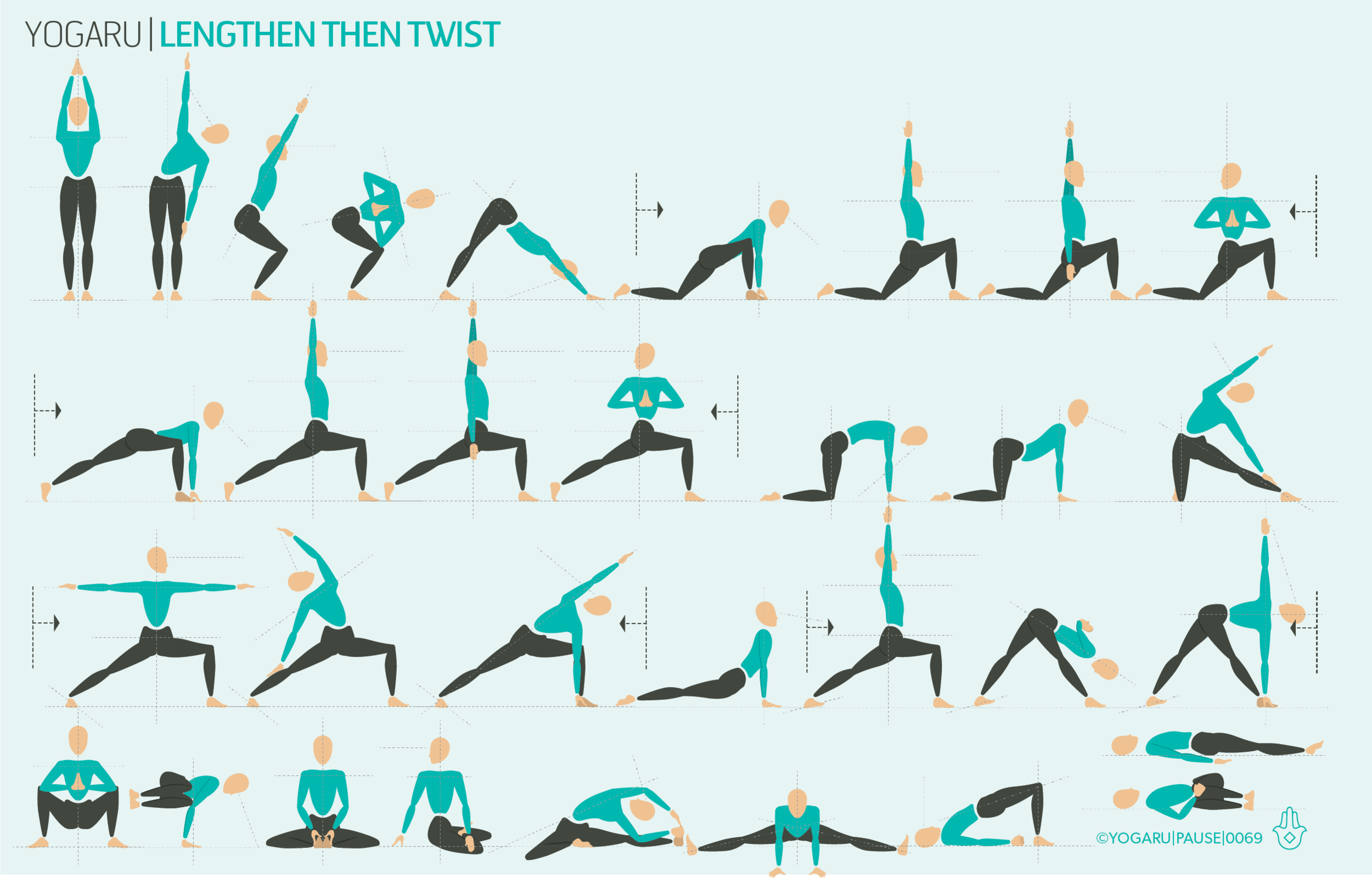LOOKING FOR CALM
The kiddies are all back to school and so far so good! I have learnt from previous years that I am inclined to turn 'headless chicken' in September, and have planned and prepped to within an inch of my life! Without consciously choosing to, I’m also finding myself shifting towards calming and supportive poses in my yoga practice – such as forward folding poses. Forward folds don’t come naturally to me, they challenge my ego and patience, but they are deeply therapeutic and soothing, and my intuition brings me to them when I need them. I’m also finding comfort in familiarity by spending extra time in some of the basic poses of yoga. When the world around you is spinning fast, it feels lovely to do the complete opposite on your mat and simplify your practice to its utmost essence.
FIND YOUR HAPPY POSE
This sequence focuses on keeping it simple and playing around with as many of the familiar poses of yoga as possible. When you encounter a pose that feels perfect to you, either in finding your strength or finding ease, pause for some extra breaths and enjoy the sensations that arise. Scan through your body from your toes to the tips of your crown and look for feedback.
EXPLORING SIMPLICITY IN YOUR PRACTICE
Notice the effects different types of movements have on you. When you flow you will notice a calming, meditative trance, as you link movement with breath. In deep stretching poses you will feel a calm introspective quietning of the mind. Alternatively the more muscular strengthening poses will bring you into the body, and the present moment, with nowhere to hide! In order to feel the cumulative benefits of this sequence, and get a sense of serenity in familiarity, practice this same sequence for 2-3 weeks. If practicing everyday is daunting for you, start with aiming for a 2-3 days a week, for 10-15 mins, and let it naturally build it up from there.
ALIGNMENT CUES
Adho Mukha Svanasana/Downward Dogs is probably one of the more widely known yoga poses. But we often use it as a transition and not give it enough time to explore. Relook at how you approach your Adho Mukha Svanasana/Downward Dogs and see is it one, or can it become one, of your familiar comforting poses.
The following are some alignment cues that you might hear in class. Print them out, along with the sequence, and play around with what makes sense to you:
Hands shoulder width apart, feet hip width apart, press into all five knuckles of your hands and lightly though the pads of your fingers, fingers spread.
Roll your biceps forward, broaden the collarbones, back of the neck long, firm your shoulder blades against your back, head in line with your ears.
Pelvis tips forward, lift your sit bones up, stretch your heels towards the ground, draw your hips up and back.
Top of the thighs pressing back, roll your inner thighs back. Hug your outer hips to the midline, gaze to the ground under your pelvis.
Draw your navel towards your spine to support the internal organs.
Look for symmetry of the whole body between right and left side joining at the midline.
To save the images for personal use click and hold down the image until the ‘save image’ option appears; on Mac hold down ‘control’ and click the image to get the option box; on PC right click on the image to get the option box. Scroll down in the ‘option box’ and click ‘save image’.
Ruth Delahunty Yogaru




